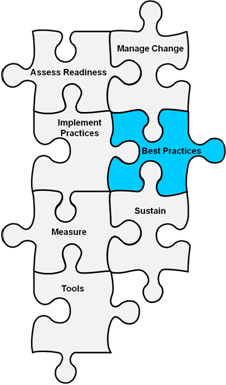
Work-related hearing loss continues to be a critical workplace safety and health issue. The National Institute for Occupational Safety and Health (NIOSH) and the occupational safety and health community named hearing loss one of the 21 priority areas for research in the next century. Noise-induced hearing loss is 100 percent preventable but once acquired, hearing loss is permanent and irreversible. Therefore, prevention measures must be taken by employers and workers to ensure the protection of workers' hearing.
Magnitude
Approximately 30 million workers are exposed to hazardous noise on the job and an additional nine million are at risk for hearing loss from other agents such as solvents and metals.
Noise-induced hearing loss is one of the most common occupational diseases and the second most self-reported occupational illness or injury. Industry specific studies reveal:
- 44% of carpenters and 48% of plumbers reported that they have perceived hearing loss.
- 49% of male, metal, non-metal miners will have a hearing impairment by age 50 (vs. 9% of the general population) rising to 70% by age 60.
While any worker can be at risk for noise-induced hearing loss in the workplace, workers in many industries have higher exposures to dangerous levels of noise. Industries with high numbers of exposed workers include: agriculture; mining; construction; manufacturing and utilities; transportation; and military.
Costs
There is no national surveillance or injury reporting system for hearing loss. As such, comprehensive data on the economic impact of hearing loss are not available. The following localized examples provide an indication of the broader economic burden.
In Washington State, workers' compensation disability settlements for hearing-related conditions cost $4.8 million in 1991 (not including medical costs). When applied to the national workforce, occupational hearing loss costs an estimated $242.4 million per year in disability alone.
This figure does not include medical costs or personal costs which can include approximately $1500 for a hearing aid and around $300 per year for batteries. Moreover, workers' compensation data is an underestimate of the true frequency of occupational illness, representing only the tip of the iceberg.
In British Columbia, in the five-year period from 1994 to 1998, the workers' compensation board paid $18 million in permanent disability awards to 3,207 workers suffering from hearing loss. An additional $36 million was paid out for hearing aids.
Through their hearing conservation program, the U.S. Army saved about $504.3 million by reducing hearing loss among combat arms personnel between 1974 and 1994. The Department of Veterans saved $220.8 million and the Army and additional $149 million by reducing civilian hearing loss between 1987 and 1997.
Prevention
Removing hazardous noise from the workplace through engineering controls (e.g. installing a muffler or building an acoustic barrier) is the most effective way to prevent noise-induced hearing loss. Hearing Protection ear plugs and ear muffs should be used when it is not
feasible to otherwise reduce noise to a safe level.
NIOSH recommends hearing lossNIOSH recommends hearing loss prevention programs for all workplaces with hazardous levels of noise. These programs should include noise assessments, engineering controls, audiometric monitoring of workers' hearing, appropriate use of hearing protectors, worker education, recordkeeping, and program evaluation.
 Print
Print Email
Email







